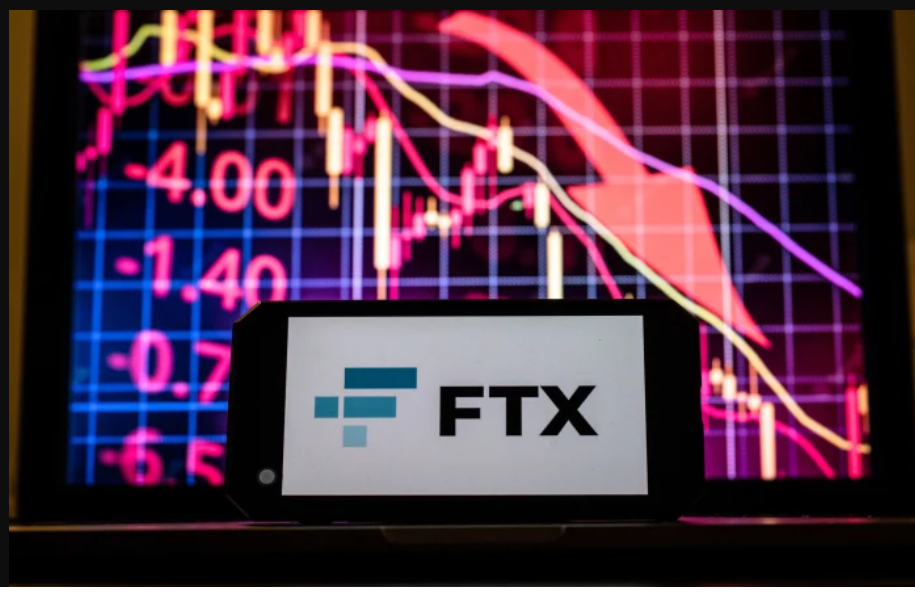Fall of FTX: A Lesson in Crypto Exchange Risks

Fall of FTX: A Lesson in Crypto Exchange Risks
Financial institutions are embracing cryptocurrencies, because they promise decentralized finance, borderless transactions, and financial freedom for everyone. As gateways to the world of digital assets, crypto exchanges play a key role. One such exchange, FTX, had been riding high on success and innovation. There are times when even the most prominent crypto exchanges can fall and get hit. FTX’s sudden downfall will be explored in this article, as well as the valuable lessons it teaches about crypto exchange risks.
The Rise of FTX
FTX, founded in 2017 by Sam Bankman-Fried and Gary Wang, quickly rose to fame in the crypto space. It gained attention for its innovative features, user-friendly interface, and wide range of trading pairs. The exchange managed to gain significant trading volume and a loyal user base in a relatively short period of time, becoming one of the top crypto exchanges.
The Unforeseen Fall
Regulating scrutiny was a big part of FX’s unforeseeable fall. Governments started looking closer at cryptocurrencies as they gained popularity, especially exchanges operating in their countries. FTX got caught in the crossfire of government agencies in several countries, including the US.
The U.S. Securities and Exchange Commission (SEC) raised concerns about certain products and services offered by FTX, such as leveraged tokens and options on tokenized stocks. The regulatory body argued that these products should adhere to securities regulations, creating a significant challenge for the exchange. The subsequent legal battles and compliance issues eroded FTX’s reputation and led to a loss in user trust.
Hacking and Security Breaches
FTX, like many other exchanges, has been targeted by cybercriminals multiple times to compromise its security measures. Hacking and security breaches are another unforeseen risk in the crypto exchange world. Even though the exchange had a lot of security measures in place, it wasn’t entirely safe from them.
In a high-profile incident, hackers managed to breach FTX’s security, resulting in the theft of a significant amount of user funds. The breach severely dented the exchange’s credibility and left many users questioning the safety of their assets on the platform.
Market Volatility and Margin Calls
The cryptocurrency market is notorious for its extreme volatility, and FTX was not spared from the consequences of sudden price swings. The exchange allowed users to engage in leveraged trading, which amplifies both potential profits and losses. During periods of extreme market turbulence, margin traders on FTX faced margin calls, leading to liquidation of their positions.
Market instability was caused by these liquidations, putting FTX’s risk management processes to the test. Some proved inadequate, resulting in considerable losses for traders and the exchange.
Customer Service Challenges
A critical lesson to be learned from FOX’s fall is the importance of robust customer support and communication. FTX struggled to resolve these issues promptly and effectively, leaving users frustrated and disheartened, due to unexpected regulatory issues, security breaches, and market volatility.
In addition to customer service problems, FTX’s users lost trust in the exchange, which caused many to seek alternatives.
Repercussions and the Road to Recovery
Crypto exchanges suffered significant repercussions when FTX dropped. It’s trading volumes dwindled, and its reputation dipped, and regulatory issues and security breaches left a lasting mark on its image. And it had legal and financial troubles that threatened to ruin it.
A number of measures were taken by FTX to recover from the crash. It had to work with regulators, address security concerns, improve risk management, and rebuild user trust. To make sure user funds are safe and secure, the exchange had to reinvent itself.
Lessons Learned
We learned a lot about crypto exchange risks from the FTX crash.
Regulatory Compliance is Paramount
Regulatory compliance is non-negotiable in the world of cryptocurrencies. FTX’s struggle with regulators highlighted the need for exchanges to operate within legal frameworks and cooperate with authorities to maintain their long-term viability.
Security Must Be a Top Priority
Crypto exchanges should priorities security because hackers love the crypto market. FTX’s security breach underscores the importance of safeguarding user assets.
Risk Management Is Vital
For leveraged trading exchanges to stay in business, they have to have robust risk management practices in place.
Effective Customer Support Is Key
Customer support is the face of any exchange, and providing prompt, effective assistance is essential. FTX’s customer service challenges highlight the importance of addressing user concerns promptly and transparently.
Conclusion
The unexpected fall of FTX, once a shining star in the crypto exchange universe, serves as a stark reminder that no exchange is immune to risk. There are a lot of things that can contribute to the downfall of an exchange, like regulatory scrutiny, security breaches, market volatility, and customer service problems. But you can learn from FTX’s experience so other exchanges can avoid these risks as well.
Crypto exchanges have to focus on security, risk management, and customer support as the space evolves. The only way they can survive unforeseen problems and keep their user base is if they do that. While the fall of FTX serves as a cautionary tale, it also serves as a valuable guide for the future of cryptocurrency exchanges, emphasizing the importance of adaptability and resilience. “The Unforeseen Fall of FTX: A Lesson in Crypto Exchange Risks” will influence how exchanges operate in the future.
